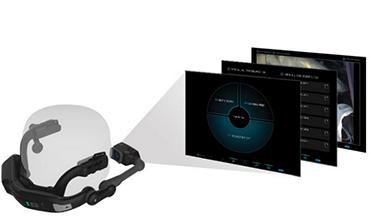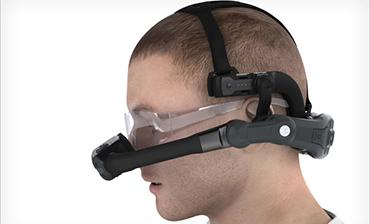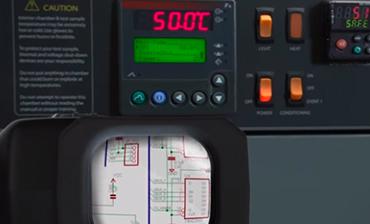Review: Zebra Technologies Wearable PC

Veteran technicians are a field-service organization's most valuable assets, and the decision to deploy one makes the most sense only after lower-level technicians have tried and failed.
Offering another way is the HC1 Headset Computer from Zebra Technologies. In the field for about a year now, the technology came along with Zebra's acquisition of Motorola Solutions' enterprise business, a $3.45 billion deal that closed in October.
The Borg-like HC1 combines a voice-controlled computer with an 800-x-600 microdisplay that's the equivalent of a 15-inch monitor, an HD camera, noise-cancelling microphone, 4G, Bluetooth and Wi-Fi. It all attaches modularly along with an adjustable Velcro-and-foam harness that when donned feels something like a bicycle helmet. Unlike Google Glass, which relies on a smartphone to do its job, the HC1 is a stand-alone computer that can think for itself and work independently of any other hardware.
[Related: IPS Joins Motorola To Create Wearable PC ]
So for technicians in the field, the HC1 can make schematics or parts diagrams visible while leaving both hands-free to perform the service. The microdisplay is designed not to block one eye, but to act as a reference just as an actual document would. "We call it info snacking," said Stephen Aponte, program director and general manager of product development at Intelligent Product Solutions, which builds HC1 apps. "You focus on your task with both eyes and occasionally look down to gather bits of information or instruction."

The HC1 hit the market in 2013, and Aponte says it's already being used in manufacturing, field service, trauma-care, construction sites, nuclear facilities, military operations, for power-line maintenance and many other scenarios in which workers benefit from having both hands free.
"If a guy is going out with a toolbox, that's our target," said Aponte. "If I have a tablet on my knee and a phone held between my ear and shoulder, I really have no free hands to work on my task," he said. The headset runs Dragon Software's Nuance speech engine on the Windows CE-based Kopin Golden-I. It responds to voice commands for navigation, opening documents, zooming in and out and getting help. Scrolling is linked to the HC1's accelerometer, which reacts to head movement.
But there's far more to the HC1 story than hands-free help files. Speaking the words "request expert" invokes an IPS-built app called Entervise, which can stream everything that's being experienced by the field worker to a back-end server, which makes the stream available to a web browser. Field workers thus become the eyes and ears of an organization's top experts, who sit comfortably in an office, op center or other location behind the lines while providing guidance to the troops. Experts can push documents, instruction lists and marked-up versions of frames grabbed from the stream.

When testing the HC1, it quickly became obvious that developers worked hard on the voice-recognition aspects. As long as we spoke one of several dozen known commands, the system understood almost every time, and provided visual and aural feedback. Once or twice we got stuck in what appeared to be a dead end, but usually we were able to get out of it using the commands "main menu" or "navigate back."
The Zebra Technologies HC1 Headset Computer lists for $4,500, and is recommended for field workers of any kind. Entervise client software pricing starts at $2,500 per user, which includes the Golden-I operating system for the HC1, Expert software and content syncing. Another $500 per user covers server-side content management and video streaming. Software prices include 30 to 90 days of training, one year of software maintenance and support.
PUBLISHED NOV. 6, 2014